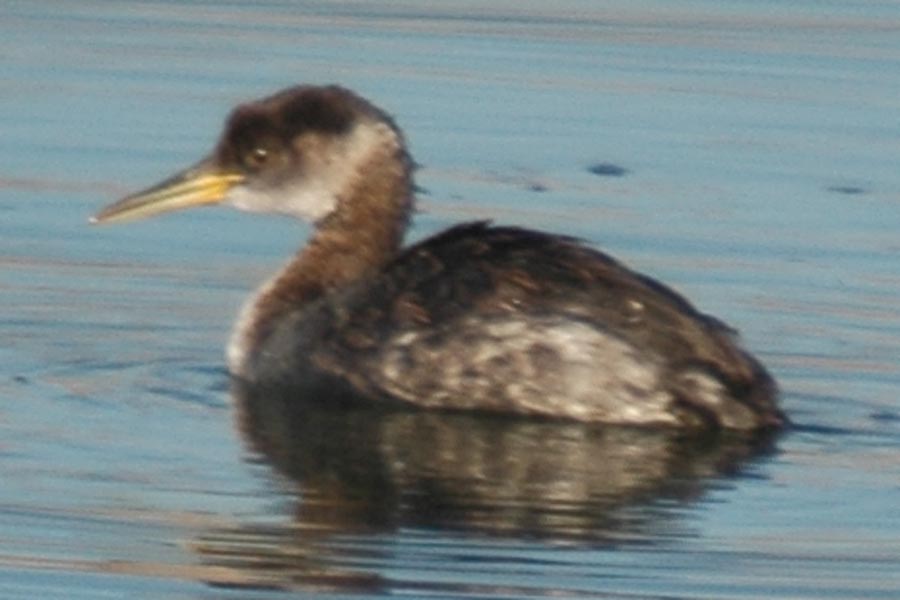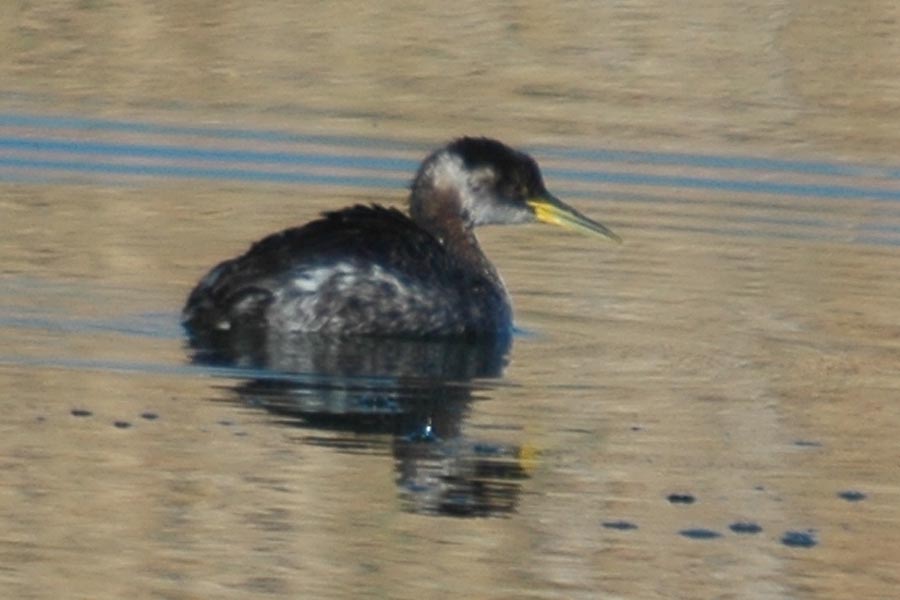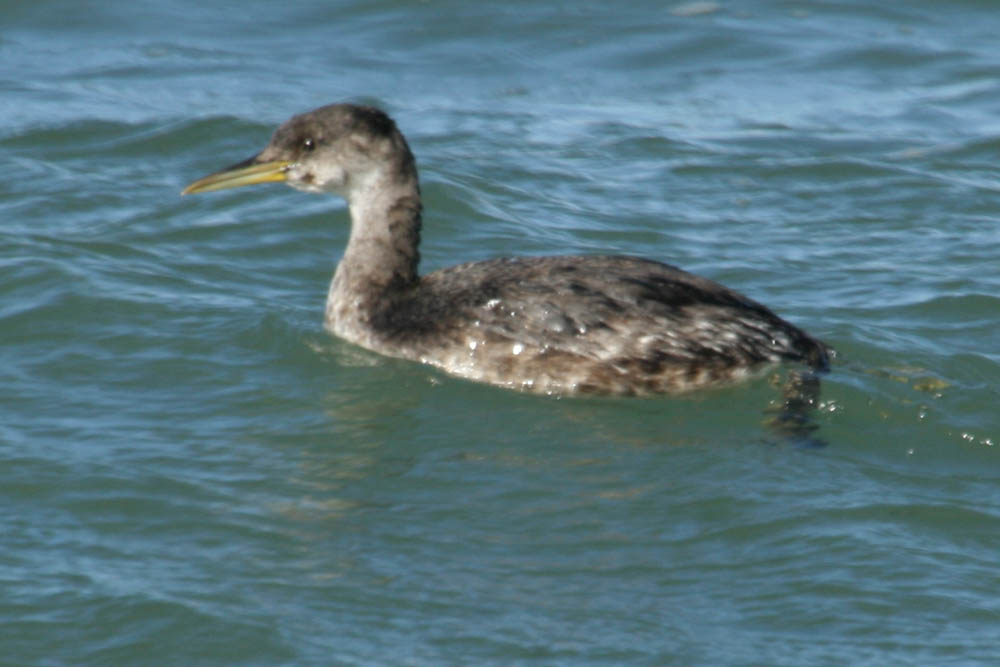Red-necked Grebe (Podiceps grisegena), Kearny Lake, Pinal County
Photographic summary and notes on identification of Red-necked Grebe
Doug Jenness
On 15 November 2006, I located the Red-necked Grebe photographed below at Kearny Lake, Pinal County, AZ. The identification was confirmed the following day by several other observers, including Gary Rosenberg who photographed it. (See photo at http://ghrosenberg.home.comcast.net/rngr_kearny.html). It remained in this location through at least 1 December enabling many birders to see it. There are only seven accepted records of this species in Arizona; the Arizona Bird Committee is considering an additional Red-necked Grebe photographed at Willcox in May 2005. If the Kearny Lake bird is accepted, it will be the first record for Pinal County. In addition to the one at Kearny, there were at least seven other reports of Red-necked Grebe in the southwest in the winter of 2006-07, an unusually large number. Documented reports include two in Arizona at Bill Williams Arm of Lake Havasu, 23 December 2006-20 January 2007 and Lake Havasu, Mesquite Bay, 26 December 2006-8 January 2007. There was also photo documentation for one at Puerto Peñasco, Sonora, 24 January 2007.
Bob and Inez Ruszala made the two photos below of the Kearny Lake bird on 25 November 2006. They clearly show the principal field marks for identifying an adult Red-necked Grebe in basic plumage. The pronounced white crescent, which extends from the chin onto the rear of the face, indicates the age as adult. The top photo reveals a rufous tinge on the neck feathers, which may mean the bird has not fully completed its molt from alternate to basic plumage. The species most likely to cause confusion in Arizona during winter are Horned Grebe (Podiceps auritus) and Eared Grebe (Podiceps nigricollis). However, the heavier bill, held at a downward angle, with yellow at its base, distinguishes the Red-necked Grebe from other Podiceps grebes. Eye color is also a good character to use when identifying grebes. Only Red-necked along with Pied-billed Grebe (Podilymbus podiceps) have dark, brown eyes. Moreover, Red-necked is larger than Horned and Eared grebes and smaller than Western and Clark’s grebes. This might not always be easy to tell, but in the case of the Kearny bird, an Eared Grebe was also present making for an effective comparison.


On first-winter Red-necked Grebe the white crescent is not as distinctly bordered as on adults. The photo below taken 23 December 2006 photo at the Bill Williams Arm of Lake Havasu, La Paz County, AZ by Tony Godfrey shows a likely first-winter bird. It has a more diffuse facial pattern and no well-defined white crescent. Its head is also slightly rounder, which is another characteristic of first-winter birds.

Documentation for both of these birds is on file with the Arizona Bird Committee.
References:
About: Birding/ Wild Birds has a lot of good information.
http://birding.about.com/library/fg/blfg-podicepsgrisegena-.htm
The U.S. Geological Survey website is also packed with information.
http://www.mbr-pwrc.usgs.gov/id/framlst/i0020id.html
Acknowledgments:
Mark Stevenson, Kurt Radamaker, and Roy Jones provided useful comments on drafts of this paper.




